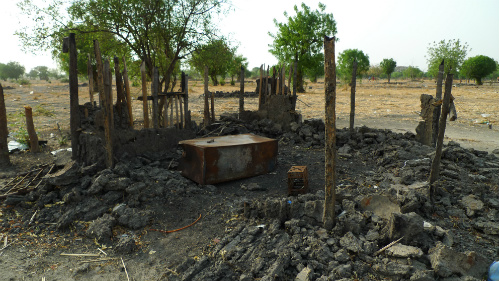
THE WORST PLACE ON EARTH ---SUDAN
Nick Turse
This, truth be told, is no longer a town, not even a razed one. It’s a killing field, a place where human remains lie unburied, whose residents have long since fled, while its few remaining inhabitants are mostly refugees from similarly ravaged villages.
The world is awash in killing fields, sites of slaughter where armed men have laid waste to the innocent, the defenseless, the unlucky; locales where women and children, old and young men have been suffocated, had their skulls shattered, been left gut-shot and gasping. Or sometimes they’re just the unhallowed grounds where the battered and broken bodies of such unfortunates are dumped without ceremony or prayer or even a moment of solemn reflection. Over the last century, these blood-soaked sites have sprouted across the globe: Cambodia, the Philippines, the Koreas, South Africa, Mexico, Lebanon, Rwanda, Bosnia, Guatemala, Afghanistan, Iraq, Syria -- on and on, year after year, country after country.
Chances are, you once heard something about the 1994 Rwandan genocide that saw up to one million men, women, and children murdered in just 100 days. You may remember the 1968 massacre of Vietnamese civilians by U.S. troops at My Lai. And maybe you recall the images of Saddam Hussein’s 1988 chemical weapons attack on Kurds in Halabja. For years, Sudan contributed to this terrible tally. You might, for instance, remember the attention paid to the slaughter of civilians in Darfur during the 2000s. The killings there actually never ended, only the public outcry did. In the 1980s and 1990s, there were also massacres farther south in or around towns you’ve probably never heard of like Malakal, Bor, and Leer.
A 2005 peace deal between U.S.-supported rebels in the south of Sudan and the government in the north was supposed to put a stop to such slaughter, but it never quite did. And in some quarters, worse was predicted for the future. “Looking ahead over the next five years, a number of countries in Africa and Asia are at significant risk for a new outbreak of mass killing,” said U.S. Director of National Intelligence Dennis Blair in 2010. “Among these countries, a new mass killing or genocide is most likely to occur in Southern Sudan.”
In late 2013 and 2014, Malakal, Bor, Leer, and other towns in the world’s newest nation, South Sudan, were indeed littered with bodies. And the killing in this country -- the result of the third civil war since the 1950s -- has only continued.
In 2014, I traveled to Malakal to learn what I could about the destruction of that town and the civilians who perished there. In 2015, I walked among the mass graves of Bor where, a year earlier, a bulldozer had dug huge trenches for hundreds of bodies, some so badly decomposed or mutilated that it was impossible to identify whether they had been men, women, or children. This spring, I find myself in Leer, another battered enclave, as aid groups struggled to reestablish their presence, as armed men still stalked the night, as human skulls gleamed beneath the blazing midday sun.
The nose-curling odor here told me that somewhere, something was burning. The scent had been in my nostrils all day. Sometimes, it was just a faint, if harsh, note carried on the hot breeze, but when the wind shifted it became an acrid, all-encompassing stench -- not the comforting smell of a cooking fire, but something far more malign. I looked to the sky, searching for a plume of smoke, but there was only the same opaque glare, blinding and ashen. Wiping my eyes, I muttered a quick curse for this place and moved on to the next ruined shell of a home, and the next, and the next. The devastated wattle-and-daub tukuls and wrecked animal pens stretched on as far as I could see.
This is Leer -- or at least what’s left of it.
The ruins of Leer, South Sudan. The town was repeatedly attacked by militias allied to the national government during 2015.
CONTINUE READING...
http://www.informationclearinghouse.info/article45719.htm
The Fire Last Time
If you want to learn more about this town, about what happened to it, Leer isn’t the best place to start. You’d be better served by traveling down the road several miles to Thonyor, another town in southern Unity State where so much of Leer’s population fled. It was there that I found Mary Nyalony, a 31-year-old mother of five who, only days before, had given birth to a son.

